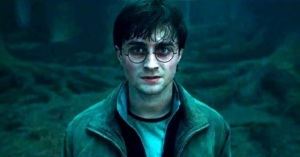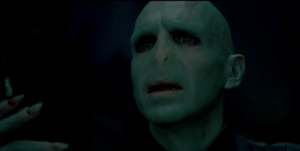Potter fans rejoice? That's the question on the mind of many a fan of J.K. Rowling's landmark series, now that the megahit franchise has released its celluloid conclusion almost four years after the final book, The Deathly Hallows, was released in 2007. Ten years, eight films and $6 billion dollars later, Harry Potter has proven to be one of the most scrutinized and lucrative franchises in cinema history and that the entirety of the wizarding epic was translated into film is truly an achievement. But it’s a bittersweet farewell for some as this marks the end of one of the most entertaining fantasy franchises of all time. Just look at the burgeoning fraternity of young adult fiction books moved to the screen as would-be franchise openers, only to sputter and flop where Potter succeeded and you’ll know that there’s something truly special about Rowling’s masterpiece.

It's tempting, then, to use the release of the final film, Harry Potter and the Deathly Hallows Part II, as an excuse to conflate feelings about the individual product with the emotions that come with seeing a ten-year phenomenon take its final bows. When Harry Potter and the dark lord Voldemort face off in their climactic final battle, is the narrative thrust coming from the two hours you've spent in the theatre that night or the 15+ hours spent watching the preceding films and the many months spent waiting between each part? To look at DHPII in a vacuum, I’m inclined to rate it about as highly as I have all the previous entries, faithful to the source material, but only good, never great films, which is admittedly a little disappointing.
After the enjoyable yet uneven blend of gritty chase scenes and ponderous table-setting that was Part I, anyone who's read the book will know that what's left is all gold. For a 130 minute film, Part II is quick on its feet, opening with a hasty recap before getting starting right where Part I left off, with bank heists and dragon hijackings crammed into just the first 30 minutes. It's less than an hour before the stage is set for a good old-fashioned "hold the castle" battle royale at Hogwarts and I might be alone here but there's something oddly cathartic about seeing the series' most iconic set blasted apart by all manner of magical spells and creatures. Even with the Potter equivalent of Helm's Deep raging outside, the film still finds time for its heroes Harry, Ron and Hermione to move through a greatest hits tour of the school's hidden rooms and secret chambers in search of the horcruxes that keep Voldemort alive.

The relentless pacing will likely irk purists more than usual and if the subtitle didn't make it clear enough, this is absolutely the second half of a whole picture. Characters have a habit of appearing without introduction and accepting the Potter universe's internal logic is mandatory; you have to trust that the plot points raised out of the blue in this chapter were established in earlier ones or you’re going to be left behind. It's breathlessly efficient, as the absence of the quidditch, homework and teen angst filler that bogged down previous entries lends greater propulsion to the welcomely bleak plot. Still, director David Yates' expedience has a tendency to undercut the emotion generated by the staggering body count that piles up, a concession that may upset fans but aids in keeping the film focussed on its real stars, the kids.
Well, the former kids I suppose. Part of the genius of Harry Potter has always been how well it used the fantasy setting to conceal its identity as a coming of age story and the growth of the reader/viewer along with the characters is a chief reason why the series has enjoyed its enduring popularity. After eight movies, the three leads, Radcliffe, Watson and Grint, have come to inhabit their respective roles with a maturity and confidence that has only grown with each film. The real heavy lifting was done by Rowling in creating the characters to begin with, but the actors and their personas have become so intertwined that by finally becoming adults on screen, the actors may have earned a chance to escape the stigma of being known as just the “Harry Potter kids”.
To focus on these three though would be giving short shrift to the rest of Part II’s impeccable cast. Many of the bigger names are relegated to cameos (Gary Oldman literally has less than three lines), but their presence invokes the grandeur and richness of the lore. One exception, sadly, is Alan Rickman as the turncoat Severus Snape, who apparently decided to make up for his lack of screentime in Part I by acting twice as hard in Part II, and the slight hamming sticks out when the rest of the cast is doing their damndest to give the material the appropriate weight. The signature look of the franchise remains intact and the visual effects continue to be a highlight, though seams are understandably present during some of the more grandiose shots. Those looking to invest in the extra dimension will have a fine enough time, as action sequences are numerous enough to distract from the way the 3D gives static shots an awkward staged look.
So if we ignore the baggage inherent to being the final part of the biggest film franchise ever, where does that leave Deathly Hallows Part II? Well, as someone who has read the source material, I’m forced to stick to the old mantra of “it’s good, but not as good as the books”. In terms of filmmaking it’s among the best of the franchise and should satisfy fans of the books and films alike but to compare it to Rowling’s original work is folly, as is so often the case when adapting books to film. But, as said before, it’s hard not to look at this final film without reflecting on the series as a whole. The journey of The Boy Wizard has been an entertaining one, but Harry Potter the film franchise has had an incredible journey all of its own. The whimsical Columbus years were followed by the darker Cuaron and Newell entries, before finally coming of age under Yates, a transition true to the books but incredibly rare in cinema. Though the films didn’t necessarily become better with each year, they matured with each entry, turning into something organic and altogether unheard of, a film franchise that grew up along with its audience.
4 out of 5


